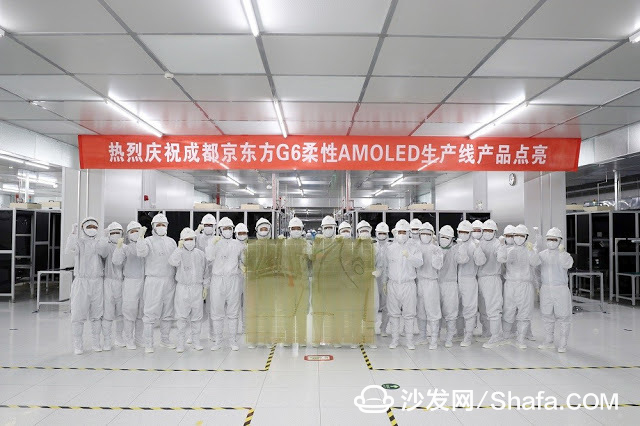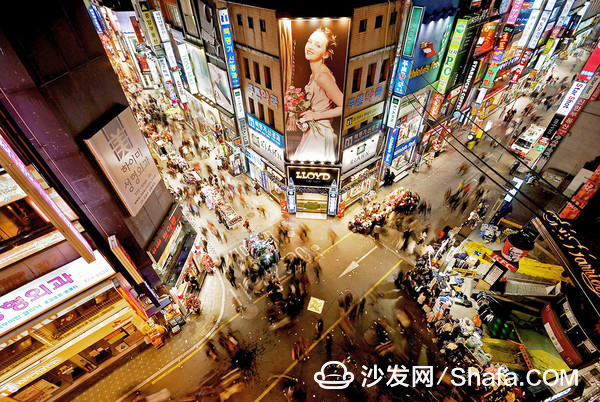In the face-to-face battle of China, Japan and South Korea that took place for more than a decade, BOE, the leader of the domestic panel industry, staged a story of “old yellow cattle†becoming “elephant†in a short history. Taking advantage of the industry technology learning curve, accumulated experience in the operation and management of the factory, Japan and South Korea's manufacturers have been dismissive, and they have been hampered by the prices of Korean and Taiwanese companies jointly manipulating panels. Today, with the escort of policy and continuous financial injection, it is considered to be a head start. If it is not the listed company of A shares later, I am afraid that many people do not understand BOE.

Just recently, BOE A released the “2017 Semi-annual Performance Announcement Announcementâ€. The report shows that in the first half of 2017, the net profit of shareholders of BOE listed companies earned 4.5 billion yuan, and the shipment volume reached 22.5 million, an increase of 47% year-on-year. Its market share exceeds that of Samsung and it has become the second largest TV panel maker in the world.
"King Burning King" will "beating soy sauce"The media has two more ridicules for BOE. One is “burning money king†and the other is “impending birdâ€. Since 2008, BOE has invested more than 10 billion yuan each year in its investment in panel production lines. It has invested 100 billion yuan in 10 years, and has lost billions of dollars every year before 2011. Since 2011, it has gradually stopped bleeding, but it still hasn’t. Obvious profit. Although it burned so much money, it still can't die. There is no shortage of technology shares and local government cooperation that do not look at short-term interests. Without these strong backings, BOE may not be able to support such a long period of time.
By taking advantage of the opportunity to turn a profit, BOE also made a big investment in the construction of two 10.5 generations of high-generation panel lines and 6-generation line AMOLED screens, with a total investment of over 100 billion, and strive to compete with the Japanese and South Korean companies in the high-end display panel. . But does BOE really have such great ability?

From the perspective of BOE's profitability structure, the main profit-making business still comes from the traditional LCD production line. The raw materials and equipment of new technologies such as OLED are still in the hands of Japanese manufacturers.
BOE’s market share climbed to second place, which did not represent the rising trend of BOE to a certain extent. On the contrary, it was a reminder to BOE. In the face of new technology and new markets, BOE has been caught in the “eatingâ€. And "beating soy sauce" ranks.
Why is BOE still in crisis? From the perspective of the entire panel industry, South Korea’s Samsung and LGD have already abandoned the LCD line with weak profitability and gradually withdrew from the LCD business, focusing on the layout of OLEDs. In the past year, the prices of traditional LCD screens have soared. It is not unrelated to the fact that the shortage of Korean companies caused by the gradual withdrawal of Korean companies. Including Japanese companies are also trying to merge JDI and JOLED, intending to struggle in the new era of display.

Another point is related to domestic policies. After the Sud incident in April this year, the government also demanded that downstream television and handset manufacturers boycott the Korean panel. Japan and South Korea's competitors are even harder to enter the country, which gives BOE and other domestic panel makers a great opportunity to make money. It is not surprising that BOE’s financial statements for the first half of the year are so good-looking.
However, as the panel cycle enters the stage of oversupply and investment in new production lines, the low-end and mid-end LCD panels will inevitably face a decline in profits and even a loss. In terms of technology, the whole industrial chain of domestic LCDs, such as liquid crystal materials, glass substrates, color filters, and driver ICs, are still unable to achieve all domestic substitution.
If BOE wants continuous development, it needs to make a difference in high-end production and technology.
Lack of core competitiveness and high-end technologyAlthough BOE is also making great efforts to layout OLED business, it is obviously not keeping up with the rhythm. In the next three years, if BOE wants to truly seize the OLED market share, it will still be quite difficult. In addition to the lack of OLED production technology and experience, the weak upstream industrial chain control capability can only make BOE hard to explain.
OLED production has two cores, one is the core equipment - evaporation machine, and the other is the core material - organic light-emitting materials. Let's take a look at who is in the layout of the core of these two industry chains.

The evaporation machine currently has a large-scale mass production capacity in the world, only Canon Dokki of Japan's Canon family, and Canon dokki until 2017, 90% of the capacity has been signed by Samsung. LGD can only use the South Korean plant Sunic System and Yaso, which are not rich in production actual results. The former jointly develops evaporation equipment with LGD, and the latter is a 19% stake in LGD.
Korean enterprises have a diversified equipment layout, and although BOE has had a long conversation with Canon Dokki, it is always on the list. Another domestic company, Truly Optoelectronics, spent 51.9 billion won to purchase SFA's evaporation equipment, and did not produce OLEDs. The production yield was not good.
In terms of organic light-emitting materials, the luminescent materials of three primary colors of OLEDs in the three primary colors of OLEDs are supplied by Dow Chemical from the United States, 6 percent of the luminescent materials of G are supplied by SDI from Samsung, and the luminescent materials of B are formed from high-lights in Japan. provide. These raw material manufacturers have a significant increase in sales after cooperation with Samsung, and they also have a strong dependence on Samsung.
BOE's investment in OLED has been anxious. Various plans have been bluffing for a long time. But looking at the current supply chain supply situation, can BOE be so happy to do it? I am afraid that it will run into the wall.

BOE is not only facing the competition of Japanese and Korean panel makers, but also the same local Hon Hai. After Hon Hai purchased Sharp, it invested and built factories in China. By using Hon Hai's funds, Sharp's technology, and Hon Hai's industrial chain advantages, more upstream companies will be favored. Sharp's technological advantages will also lead Hon Hai to gradually move toward the first tier.
What is even more appalling is that now that BOE has made great efforts to layout OLEDs, Samsung has already begun investing in the real next-generation display technology, Micro LED. This may happen when the time comes: When all domestic panel makers think that OLED is about to usher in the spring of the development of the industry, Micro LED will drive OLED to the polar region.
to sum up:
After a wave of technology broke out, BOE could indeed improve its plant technology and production efficiency with a great deal of financing, diligence and day-to-day training, and eventually competed for existing technology products with a high “price-performance ratioâ€. Broad market share. However, in the face of a new wave of technology, old technology products have been gradually abandoned by the first echelon. Enterprises with weak technological layout like BOE can only repeat the road of "technology popularization." Laboratory technology and factory technology all play an important role in the development of panel companies. However, the former can lead a technological change, and the latter can only follow the lead.
Smart TV/box information can focus on smart TV information network sofa butler (http://), China's influential TV box and smart TV website, providing information, communication, TV boxes, smart TVs, smart TV software, etc. Answering questions.